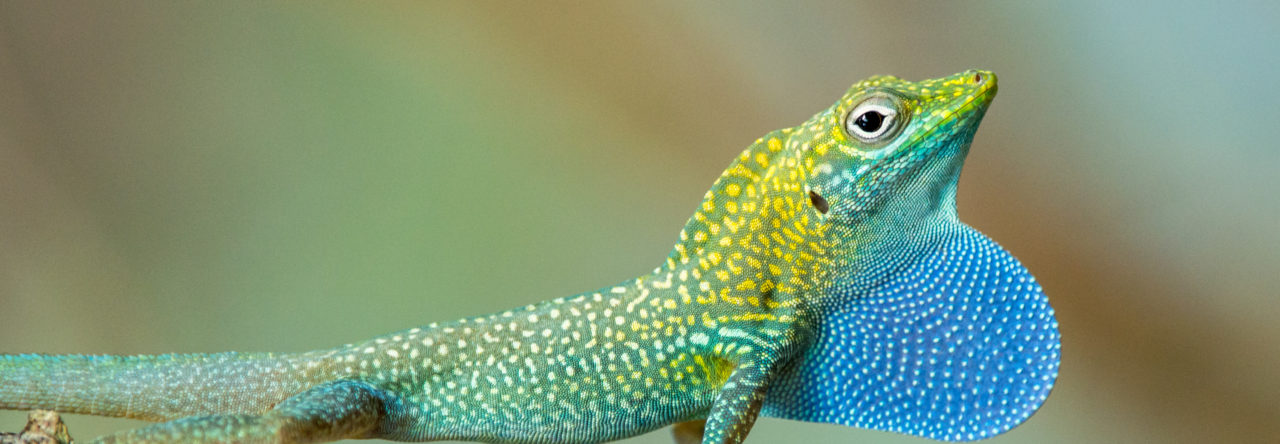From the pages of Binghamton University’s 

Anolis aquaticus, a semi-aquatic lizard species in Costa Rica
In the fascinating world of semi-aquatic lizards, the anoles have emerged as the scuba-diving champions, capable of staying submerged for over 16 minutes. However, for these cold-blooded creatures, spending time in cool running streams can come with physiological trade-offs, according to new research from Binghamton University, State University of New York.
A recent study by doctoral candidate Alexandra M. Martin, Christopher K. Boccia of Queens University in Canada, and Assistant Research Professor Lindsey Swierk explored the delicate balance between behavioral needs and physiological costs. “Diving behavior in semi-aquatic Anolis lizards results in heat loss with sex-specific cooling tolerance” recently appeared in Behavioral Ecology and Sociobiology.
“This may not sound like very much, but biologically, 20 seconds could easily be the difference between life and death,” Martin pointed out, referring to the study’s finding that male anoles stayed underwater for 20 fewer seconds than females on average.
Diving underwater allows anoles to evade predators, but it comes at the cost of up to a 6°C drop in body temperature. As ectotherms, reptiles rely on their external environment to maintain body heat, and remaining in cool water can potentially affect critical functions like muscle performance, essential for escaping predation.
“Semi-aquatic anoles seem to have evolved a sex-specific tradeoff between finding safety underwater and retaining body heat on land. This represents what behavioral ecologists call an ‘optimization problem,’ where animals have to balance the costs and benefits of performing particular behaviors,” Swierk explained.
The researchers found that females, who invest more energy in offspring production, trade the physiological cost of cool water for extra safety by diving longer. Males, on the other hand, shorten their dives to conserve body heat and physiological capacity, minimizing the “time out” period as their muscles recover from the cool water, which may be advantageous for courtship, mating, and territorial defense.
Like little scuba divers, anoles maintain a “dry suit” of air underwater, which may help them retain some heat. The researchers plan to further explore the function and mechanisms of this trait and others in future research.
“The ways that animals can adapt to environmental pressures are astounding and have continued to inspire humans to push the boundaries of bio-inspired design,” Swierk said. “We are curious and excited to explore these ideas in the future.”


Kevin de Queiroz
Cool, but not sure why you say they are the scuba-diving champions for 16+ minutes. According to Dawson et al. (1977), marine iguanas “sometimes descend to depths as great as 12 m and remain submerged for as long as 30 min (Hobson, 1965, 1969). Darwin (1883) reported that an animal tied underwater for an hour was still alert when released.” Is it because the marine iguanas are not known to rebreathe air carried with them (no SCUBA)?